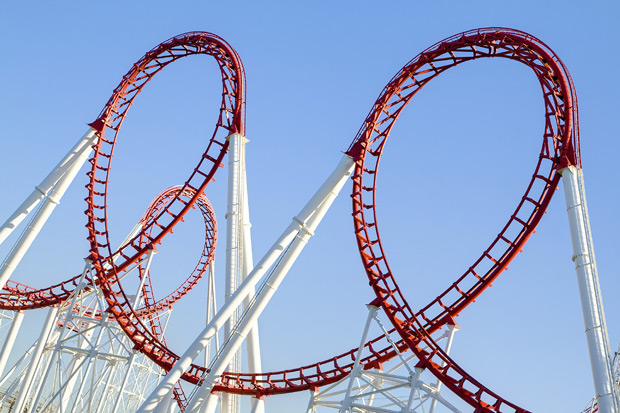DATA NEWS We love data!
Shares on a ride to nowhere?
Everyone knows the maxim ‘time in the market beats timing the market’. Well that theory may be about to be tested because the Australian stock market has hit a wall.
The maxim holds that if you put your money into good stocks, say over ten years, you’ll always end up well in front and historically it’s been proved correct. But as dbdata pointed last week the S&P ASX200 index, reflecting Australia’s biggest companies, looks like finishing the financial year just about where its started!
Reflecting on this the markets’ boss over at the Australian Financial Review, Phil Baker, has been spending time in front of the Bloomberg data machine lately just to see where that market is historically . . . and pondering whether the maxim holds true.
If the market stays where it is – around 5300 – it will not only be steady on the year, but steady on the year before that! In the past ten years swings and roundabouts have seen the index hit a peak of 6828 before the GFC only to crash back to as low as 3145 after GFC.
Indeed, give or take a few points it was at that same level in April 2006, when it was on its way to 6828 and then again in March and June 2008 when the index was on its way back down to 3145. It then repeated this performance in 2013, moving from a low 4655 to almost 6000 only to repeat a slide back to those 5300 levels.
Looked at another way the Australian sharemarket has gone nowhere in ten years. Putting this into context Wall Street suffered the same sort of performance in the first ten years of the this century. It was know as the lost decade.
It’s true if you followed the maxim and stayed in the market for ten year you’d still be sitting on some pretty useful dividends, but not much in the way of capital gains.
If you entered the market a couple years back – post the GFC – you would have reaped good capital gains particularly among the banks.
But in today’s market Phil Baker estimates in the recent period the top 20 stocks are down almost 12 per cent, which gets cut to 7 per cent thanks to dividends, while the major index, as we pointed last week, is basically flat including dividends during the same time.
Baker reports “the big improver has been the property index is up almost 22 per cent once dividends are included, and industrial stocks have also done well with a total return of 18 per cent.
“The banking index, however, is down 10 per cent, despite those dividends, while the small-cap sector has delivered a total return of 15 per cent.” On a sector basis consumer discretionary stocks, were up 16 per cent, health and utilities up 15 per cent, while the energy sector fell 23 per cent reflecting the decline in the oil price.
According to CBA’s market arm CommSec it is property, up almost 14 per cent and government bonds, 7.3 per cent, that have easily outperformed shares over the past three years.
For the those investors still backing the ‘time in the market’ theory the question is where does the growth come from for a lot of big mature companies that are facing challenges from tech-savvy interrupters looking to eat their lunch.
To many it doesn’t matter as long as those franked dividends keep coming; it’s still a lot better that having your money in cash but woe and behold any of those big operations that are forced to cut dividends. The sharemarket reaction would be ruthless.


